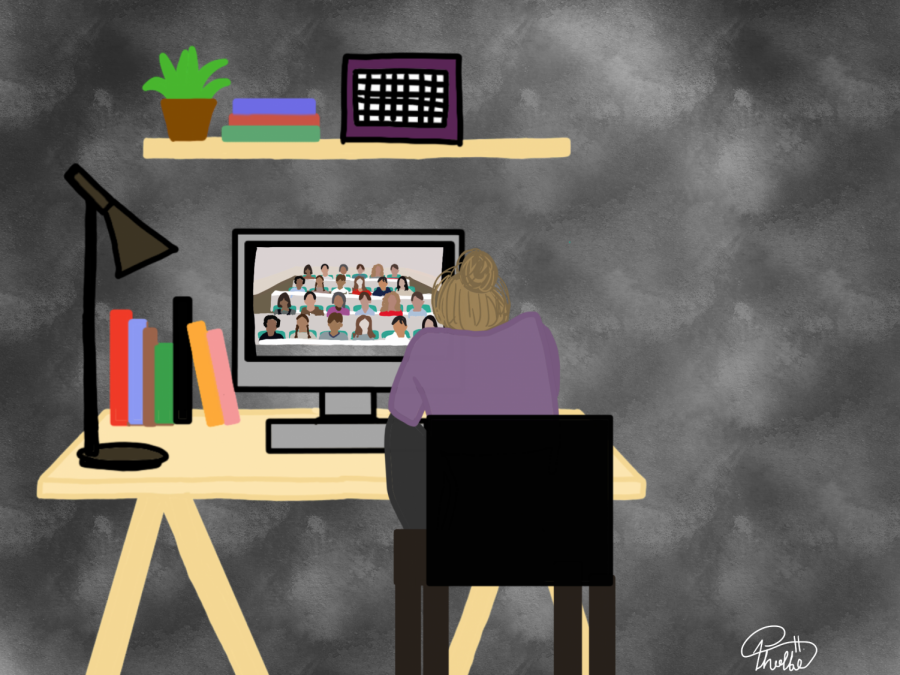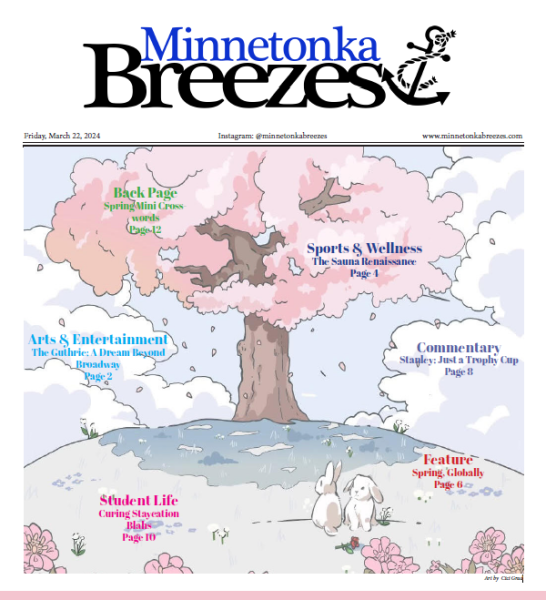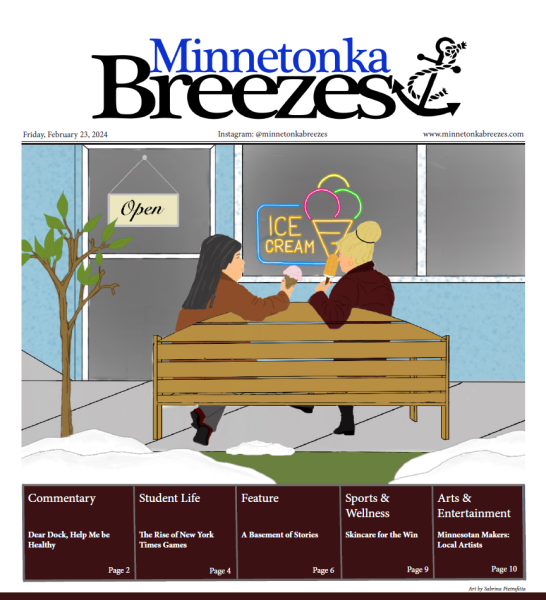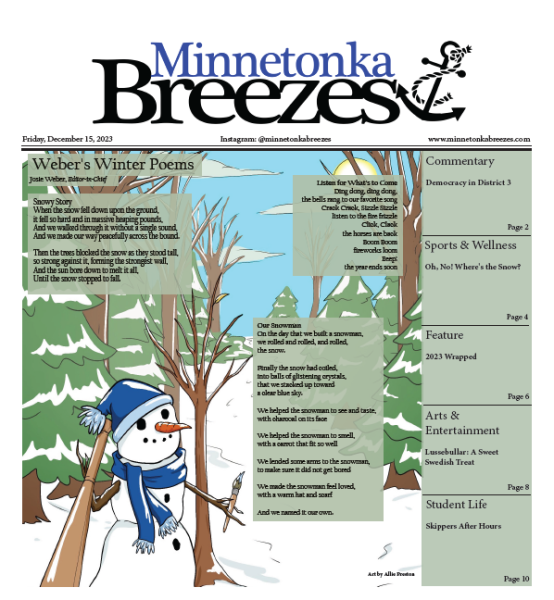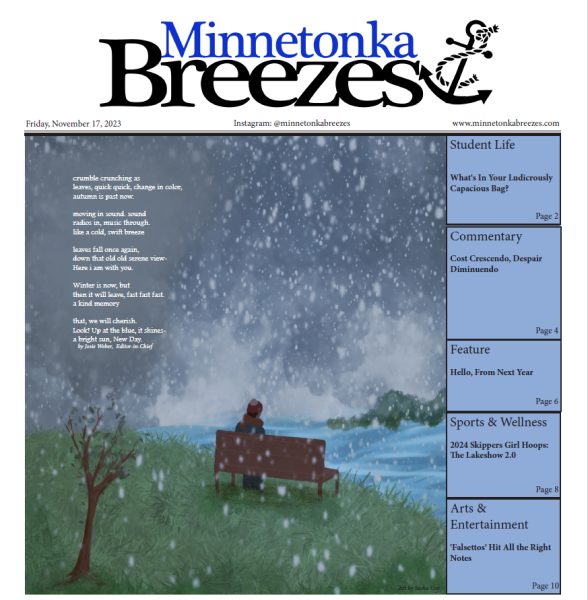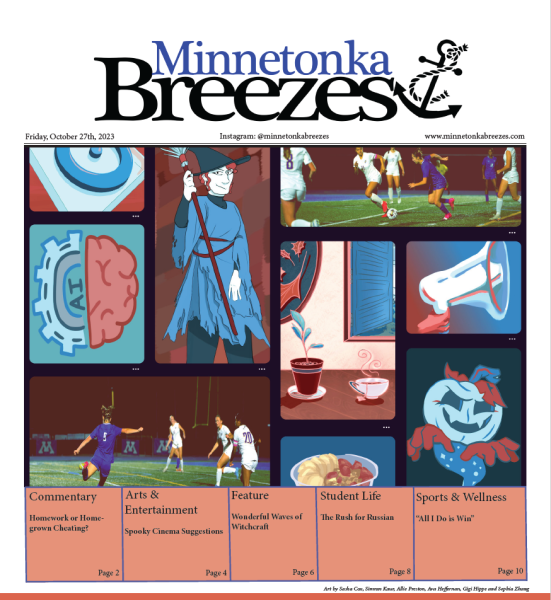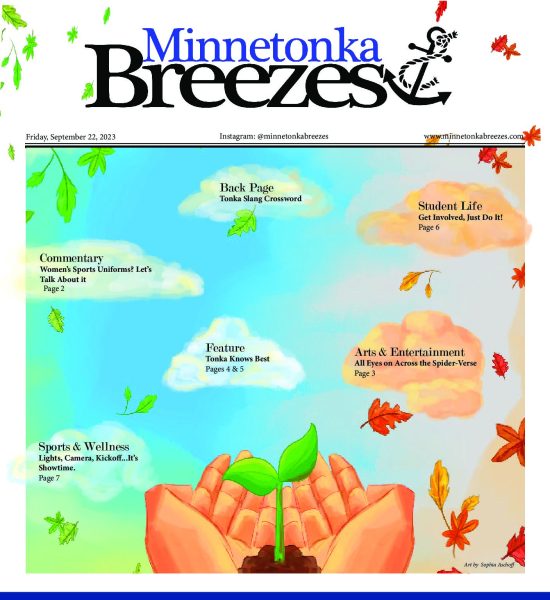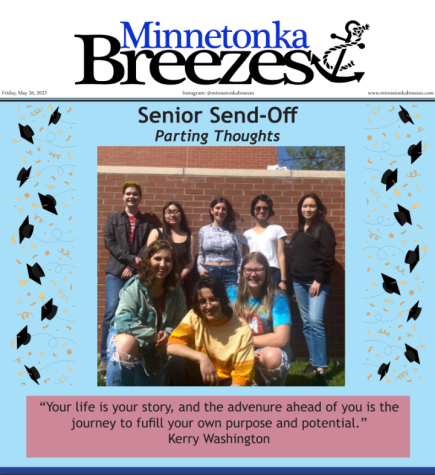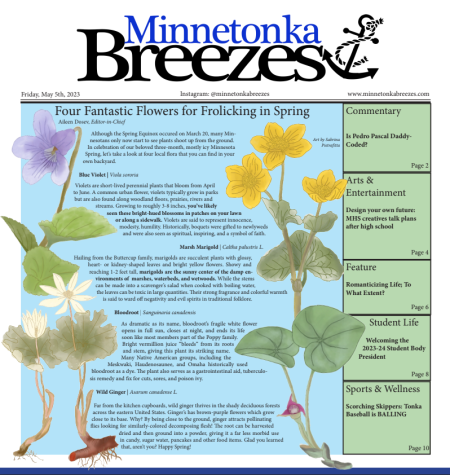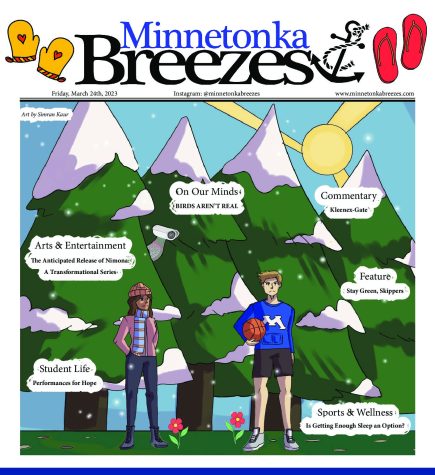Online Students Reflect On The Hybrid Learning Model
September 24, 2021
During the 2020-2021 school year, learning took a lot of different forms at Minnetonka High School, especially during the second semester. While the majority of students transferred to a hybrid model and then an in-person model, many students opted to stay online for the rest of the school year. These students, comprising over 10% of the student population last year, joined in-person classes via Google Meets, becoming oftentimes a silent addition to brick-and-mortar learning.
I interviewed two of these students, allowing them to share their experiences learning virtually while the majority of their classmates were in the brick-and-mortar classroom.
Sri Pulavarthi, ‘22, was enrolled in the Vantage Health Sciences program while e-learning during her junior year. She was also taking multiple AP classes, including AP Language and Literature, Biology, World History, and Calculus BC.
In regards to managing these challenging courses while the majority of her peers were in person, Pulavarthi said, “The pressure on me to participate in class kind of disappeared when I was online since the people in person were more likely to participate. I feel like there were some times where the teachers forgot to unmute their mic or play a video that the in-person students could only hear.”
Pulavarthi also spoke about her experience being a Vantage student online.
She said, “For Vantage, I was the only one online in my small group company project. This made it harder for me to communicate with them, especially when my internet was unstable. As part of the Health Sciences strand, I was supposed to get certified as a registered nursing assistant (NAR). I was really excited for this part of Vantage, but I wasn’t actually able to get certified because I could only complete around 25 of the 60 required skills to get certified. I would have to go into the Vantage building to learn the rest of the skills, but I couldn’t do that.”
Even though Pulavarthi experienced many hardships last year, she is optimistic about the rest of her high school career.
She said, “With everyone being in school and me being online last year, I feel like senior year is so much more important. I am so grateful that I still have the opportunity to enjoy clubs and other extracurriculars this year, and have the school experience that I missed last year.”
Some of the activities that Pulavarthi is looking forward to include Desi Student Union, Homecoming, and TEDxYouth@MinnetonkaHS.
Ben Trinh, ‘23, is a Chinese Immersion and AP student that is involved in several clubs including Esports Club and Climbing Club. He had similar experiences learning online.
He said, “I feel like over time I got used to online learning. It was easy since things like assignments and tests were mostly online anyways. But while attending class through Google Meet, I definitely felt a disconnect from the rest of the class. Although most teachers did a good job of interacting with the online students and making sure they were present, there was still some disconnect. In Chinese [Immersion], I felt that these problems were prevalent since learning a second language was difficult because I was less involved compared to the people in person.”
Even though Trinh spent his sophomore year online, he managed to get involved and meet new people.
He said, “Since I am in the Minnetonka Esports club, I had no problem feeling left out as the entire club was online. For Climbing Club, it became less of a club and more of a set time to hang out. So through the Esports Club, I really found a way to be online but still be involved with others at school.”
While Pulavarthi and Trinh chose to stay online as in-person learning options became available for health and transportation reasons, ultimately there were many other reasons why other students like them decided to stay online.
Ted Schultz, the Activities Director at the high school said, “Many athletes chose to be online, so they would have a lower chance of being contact-traced and having to quarantine during their sports season. I found that these students that were involved in high school sports had an easy transition going back to school since athletics and activities provided them a sense of belonging and community. I’m not too sure about the students that were online though.”
It is clear through Pulavarthi, Trinh, and Schultz’s comments that online learning certainly has its drawbacks. However, one thing is clear: staying connected and involved with the high school makes learning, especially e-learning, far easier and more enjoyable.
























